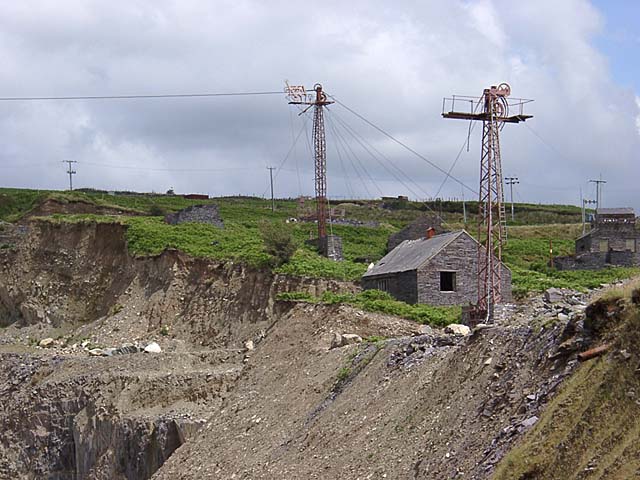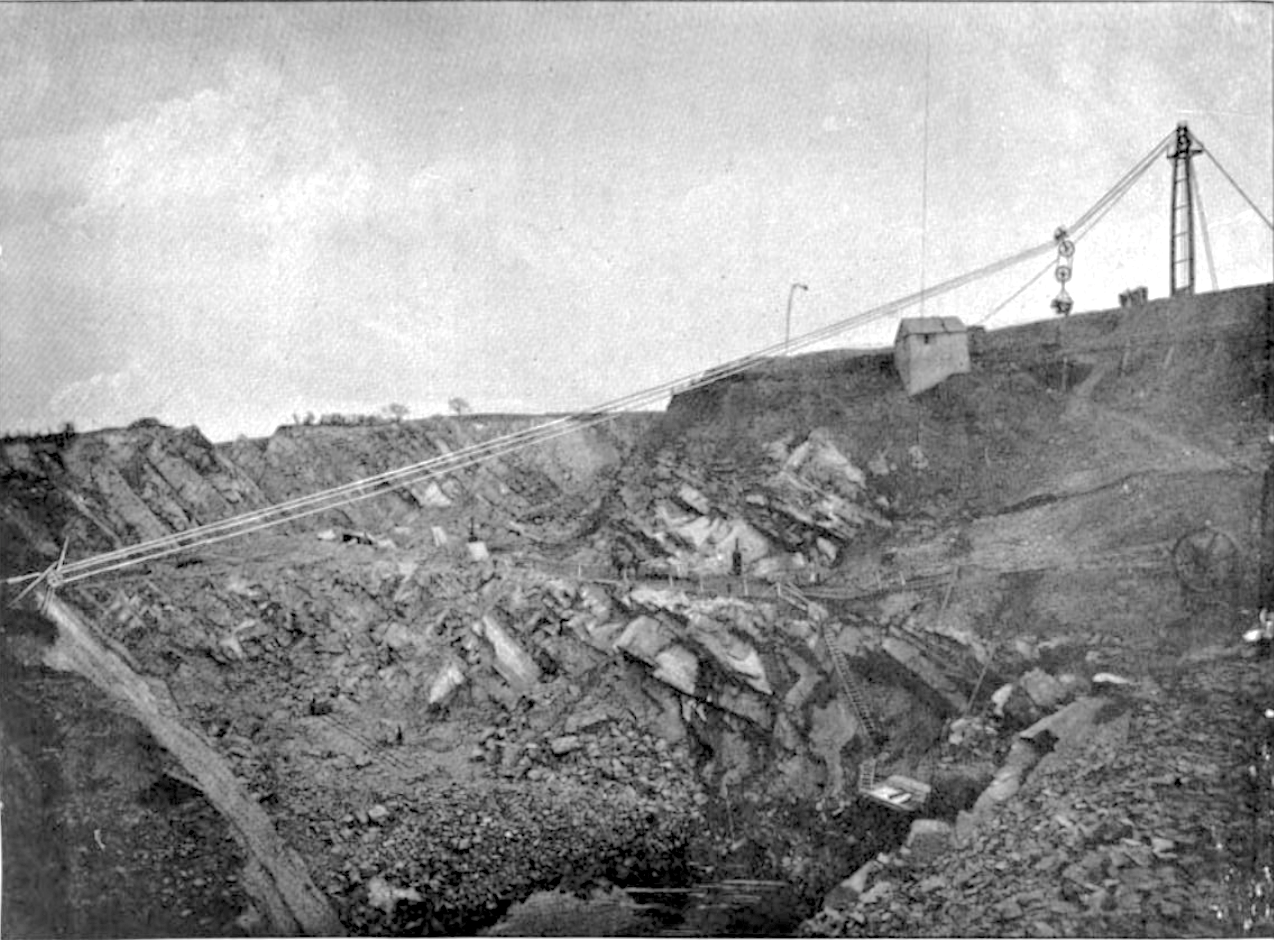Blondin (quarry equipment) on:
[Wikipedia]
[Google]
[Amazon]

 Blondins (also known as Henderson Inclined Cableways) were a type of material ropeway; they were named after the famous tightrope walker
Blondins (also known as Henderson Inclined Cableways) were a type of material ropeway; they were named after the famous tightrope walker
 Blondins were developed by John Fyfe, a Scottish quarry engineer. He installed the first example in 1872 at Kemnay granite quarry at
Blondins were developed by John Fyfe, a Scottish quarry engineer. He installed the first example in 1872 at Kemnay granite quarry at

 Blondins (also known as Henderson Inclined Cableways) were a type of material ropeway; they were named after the famous tightrope walker
Blondins (also known as Henderson Inclined Cableways) were a type of material ropeway; they were named after the famous tightrope walker Charles Blondin
Charles Blondin (born Jean François Gravelet, 28 February 182422 February 1897) was a French tightrope walker and acrobat. He toured the United States and was known for crossing the Niagara Gorge on a tightrope.
During an event in Dublin in ...
.
Description
Blondins are a specialized type of material ropeway that incorporates a mechanism to raise and lower loads vertically from the suspended ropeway. This allowed them to cross wide, deep spaces such as quarries and move material from the floor up to the level of the ropeway and across to the edge of the quarry. They are powered either by a steam or electrical hoist.History
 Blondins were developed by John Fyfe, a Scottish quarry engineer. He installed the first example in 1872 at Kemnay granite quarry at
Blondins were developed by John Fyfe, a Scottish quarry engineer. He installed the first example in 1872 at Kemnay granite quarry at Garioch
Garioch ( sco, The Geerie, , gd, Gairbheach) is one of six committee areas in Aberdeenshire, Scotland. It has a population of 46,254 (2006 estimate), which gives it the largest population of Aberdeenshire's six committee areas. The Garioch con ...
. In 1896, John M. Henderson and Co. introduced the first commercially available Blondin system, which used steel ropes instead of the earlier iron ropes. The first installation at a Welsh slate quarry was a pair of blondins at Pen-yr-Orsedd quarry in 1899. These were powered by stationary steam engines.
Penrhyn quarry
The Penrhyn quarry is a slate quarry located near Bethesda, North Wales. At the end of the nineteenth century it was the world's largest slate quarry; the main pit is nearly long and deep, and it was worked by nearly 3,000 quarrymen. It has ...
in Bethesda was based around a single large pit over 400 feet deep, worked as a series of terraces. It adopted blondins in 1913. A variety of means were used to transport slate from the terraces to the mills where the rock was processed. The quarry already had an extensive internal narrow gauge
A narrow-gauge railway (narrow-gauge railroad in the US) is a railway with a track gauge narrower than standard . Most narrow-gauge railways are between and .
Since narrow-gauge railways are usually built with tighter curves, smaller structu ...
railway system in place and many terraces were connected via inclines. Blondins were used to connect more remote terraces directly to the mills - they were distinguished by the fact that rock was transported on the ropeways in railway wagons slung from cradles. The ropeways ran horizontally or nearly horizontally until the cradle hit a stop, at which point the wagons were automatically lowered to ground level where they were moved by rail to the point of loading or unloading.
Uses
Blondins were used in many countries, notablyUnited Kingdom
The United Kingdom of Great Britain and Northern Ireland, commonly known as the United Kingdom (UK) or Britain, is a country in Europe, off the north-western coast of the European mainland, continental mainland. It comprises England, Scotlan ...
and the United States
The United States of America (U.S.A. or USA), commonly known as the United States (U.S. or US) or America, is a country primarily located in North America. It consists of 50 states, a federal district, five major unincorporated territori ...
. Though most well-known in the Welsh slate industry, they were used in quarries of many sorts, and on bridge construction and other engineering projects.
References
Bibliography
* {{DEFAULTSORT:Blondin (Quarry Equipment) Slate industry in Wales Mining equipment Industrial railways in Wales